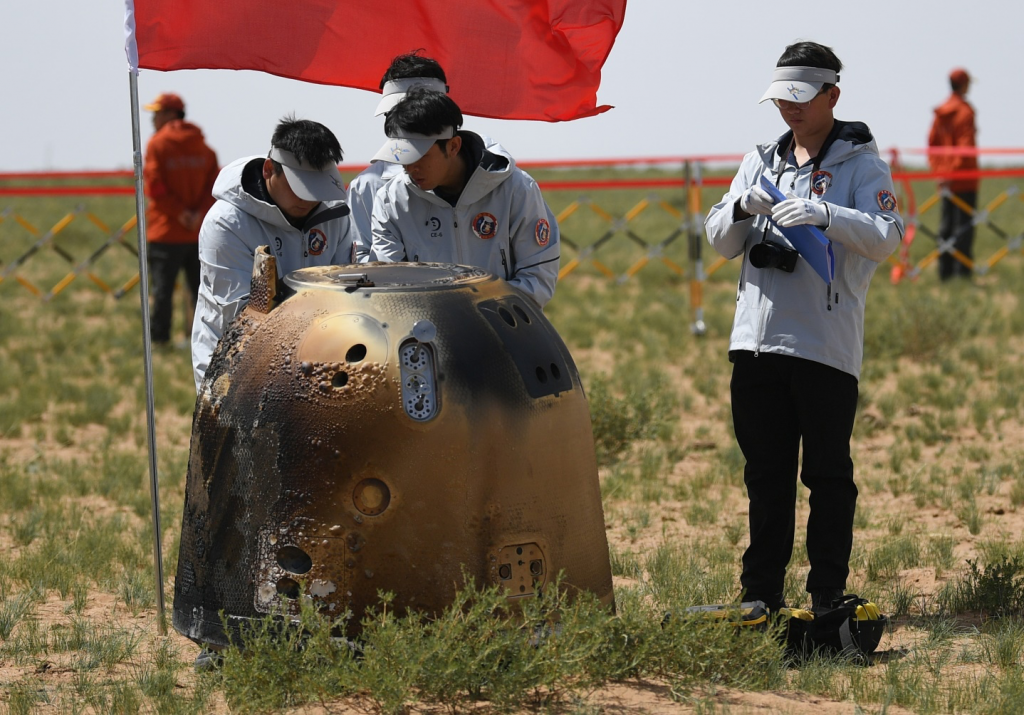Published: June 27,2024

The return capsule of China’s Chang’e-6 probe lands in SiziwangBanner, north China’s Inner Mongolia Autonomous Region, June 25, 2024. /CFP
The international community is all praise for China’s Chang’e-6 lunar mission after the returner brought to Earth the world’s first samples collected from the moon’s far side on Tuesday.
At a briefing on the same day, Stephane Dujarric, spokesperson for the UN secretary-general, termed the mission a remarkable achievement and a great demonstration of international collaboration in outer space.
The Chang’e-6 lander had carried four international payloads, one each from the European Space Agency (ESA), France, Italy and Pakistan, and they all functioned as planned.
French National Center for Space Studies (CNES) Chairman Philippe Baptiste told CGTN that their instrument named Detection of Outgassing RadoN(DORN) was functioning well and he looked forward to analyzing the data.
Speaking of reasons behind the necessity of international cooperation, Baptiste said countries could share the risks as space missions are usually expensive and risky.
“On top of that, we are also very excited to have good partners from the globe, because when you bring competencies from all over the world on a given scientific mission, it is more likely to be successful,” Baptiste said in an interview with CGTN’s Sun Ye after the launch of Space-based multi-band astronomical Variable Objects Monitor (SVOM) in Xichang, southwest China’s Sichuan Province.
The SVOM is the first astronomical satellite jointly developed by China and France.
Great scientific significance
Charles Mpho Takalana, head of Secretariat of the African Astronomical Society (AfAS), told CMG that the most significant thing about this mission is that it is the first time that humans have brought samples from the far side of the moon.
Takalana, who is also the deputy director of the International Astronomical Union’s Office of Astronomy for Development, said landing on the moon is very challenging because the surface is not friendly for landing a probe, and the far side is the least explored side of the moon, so being able to know its composition could have great scientific significance.
“It (Chang’e-6) will bring us more material to study the moon. It’s definitely a very nice breakthrough for the Chinese industry and for the world development of space studies,” Kirill Babaev, director of the Institute of China and Contemporary Asia, Russian Academy of Sciences, told CMG in an interview.
Near-side lunar samples of the Chang’e-5 mission.
James Head, a professor of planetary geosciences at Brown University, told CNN that international scientists are very excited about the mission. Head, together with other European scientists, collaborated with Chinese scientists for analyzing samples from the Chang’e-5 mission that brought near-side samples.
Head also pointed out that the samples brought back from the moon are a treasure chest, and understanding the moon’s makeup can not only aid our understanding of the past but also future exploration of the solar system.
Xinhua
 Africa -China Review Africa -China Cooperation and Transformation
Africa -China Review Africa -China Cooperation and Transformation
